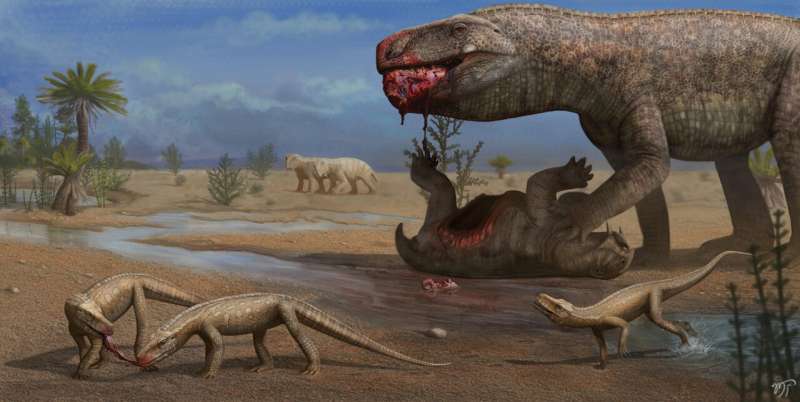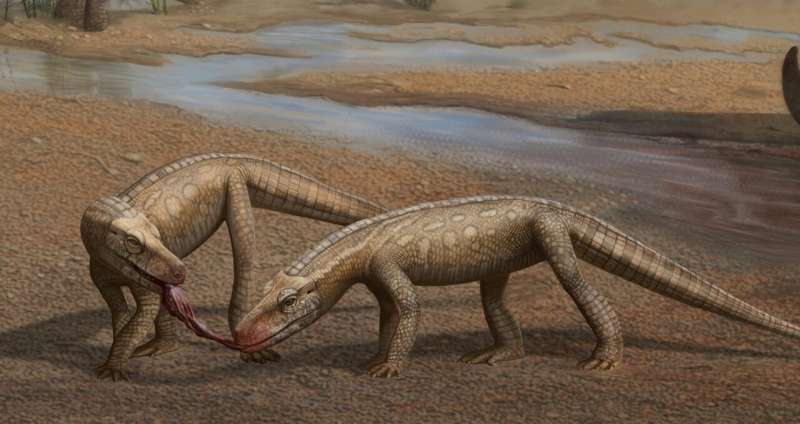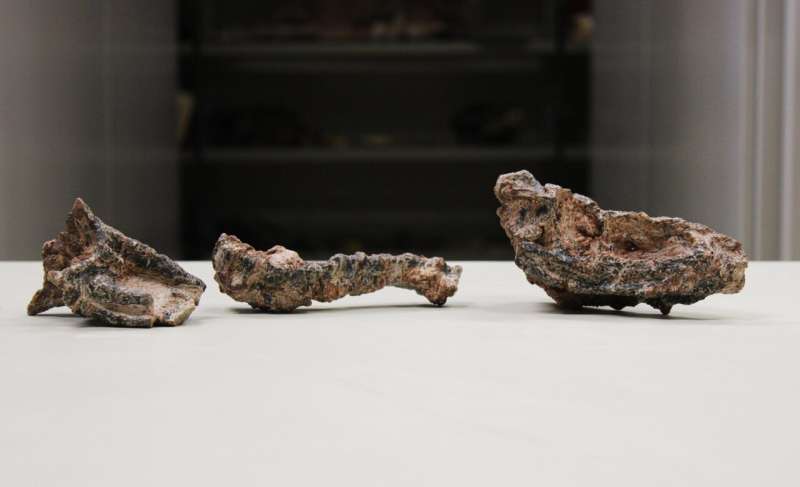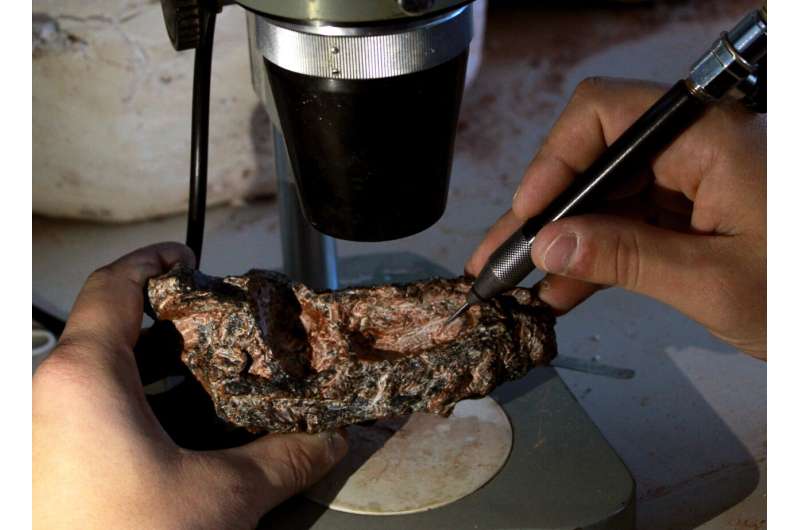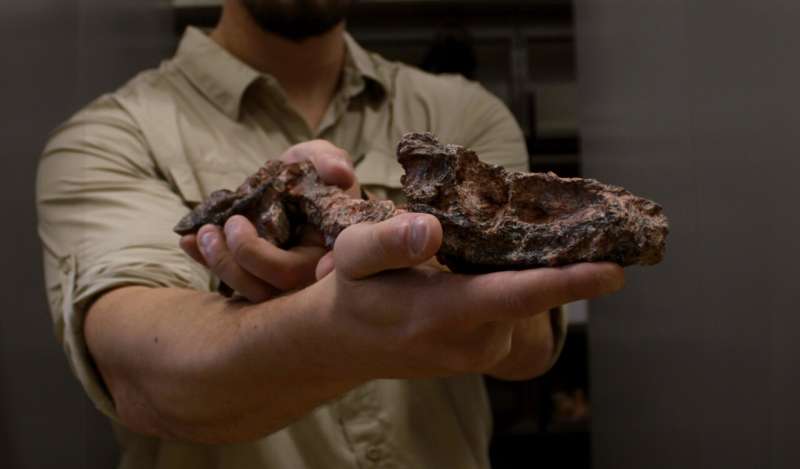Middle-Late Triassic landscape of southern Brazil depicting a large Prestosuchus chiniquensis feeding on the carcass of a dicynodont while individuals of Parvosuchus aurelioi compete for scraps. Credit: Matheus Fernandes / Nature
The discovery of a new, ancient, predatory reptile dubbed Parvosuchus aurelioi—part of a group of crocodile-like reptiles called pseudosuchians—in Brazil is described in a paper in Scientific Reports. The specimen, which dates to approximately 237 million years ago, during the Middle-Late Triassic, is the first small predatory reptile of its kind to be found in this country.
Prior to the dominance of the dinosaurs, pseudosuchians were a common form of ancient quadruped reptile during the Triassic Period (252—201 million years ago), with some species among the largest carnivores of the time. Smaller pseudosuchians known as gracilisuchids lived alongside these apex predators and have been found in areas such as China and Argentina.
Now, Rodrigo Müller reports the discovery of a new species of gracilisuchid based on a specimen found in the Santa Maria Formation in Brazil.
The partial skeleton dates to approximately 237 million years ago and consists of a complete skull including the lower jaw, 11 dorsal vertebrae, a pelvis, and partially preserved limbs. The author names the new species Parvosuchus aurelioi, which derives from 'parvus' (small) and 'suchus' (crocodile) and honors the amateur paleontologist Pedro Lucas Porcela Aurélio, who discovered the fossil materials.
-
Artistic reconstruction of two individuals of Parvosuchus aurelioi in a Triassic landscape. Credit: Matheus Fernandes / Nature
-
Fossil of Parvosuchus aurelioi. Credit: Rodrigo Temp Müller / Nature
-
Fossil skull of Parvosuchus aurelioi under mechanical preparation. Credit: Janaína Brand Dillmann / Nature
-
Fossil of Parvosuchus aurelioi. Credit: Janaína Brand Dillmann / Nature
The skull measures 14.4 centimeters in length and features long slender jaws with pointed teeth that curve backwards, and several skull openings.
The skeleton is lightly built and estimated to be less than one meter long in total length. These features classify P. aurelioi as a gracilisuchid, which makes it the first species from this group to be confirmed in Brazil, according to the author. This finding highlights the diversity among pseudosuchians in the Triassic, he adds.
More information: Rodrigo T. Müller, A new small-sized predatory pseudosuchian archosaur from the Middle-Late Triassic of Southern Brazil, Scientific Reports (2024). DOI: 10.1038/s41598-024-63313-3. www.nature.com/articles/s41598-024-63313-3
Journal information: Scientific Reports , Nature
Provided by Nature Publishing Group
